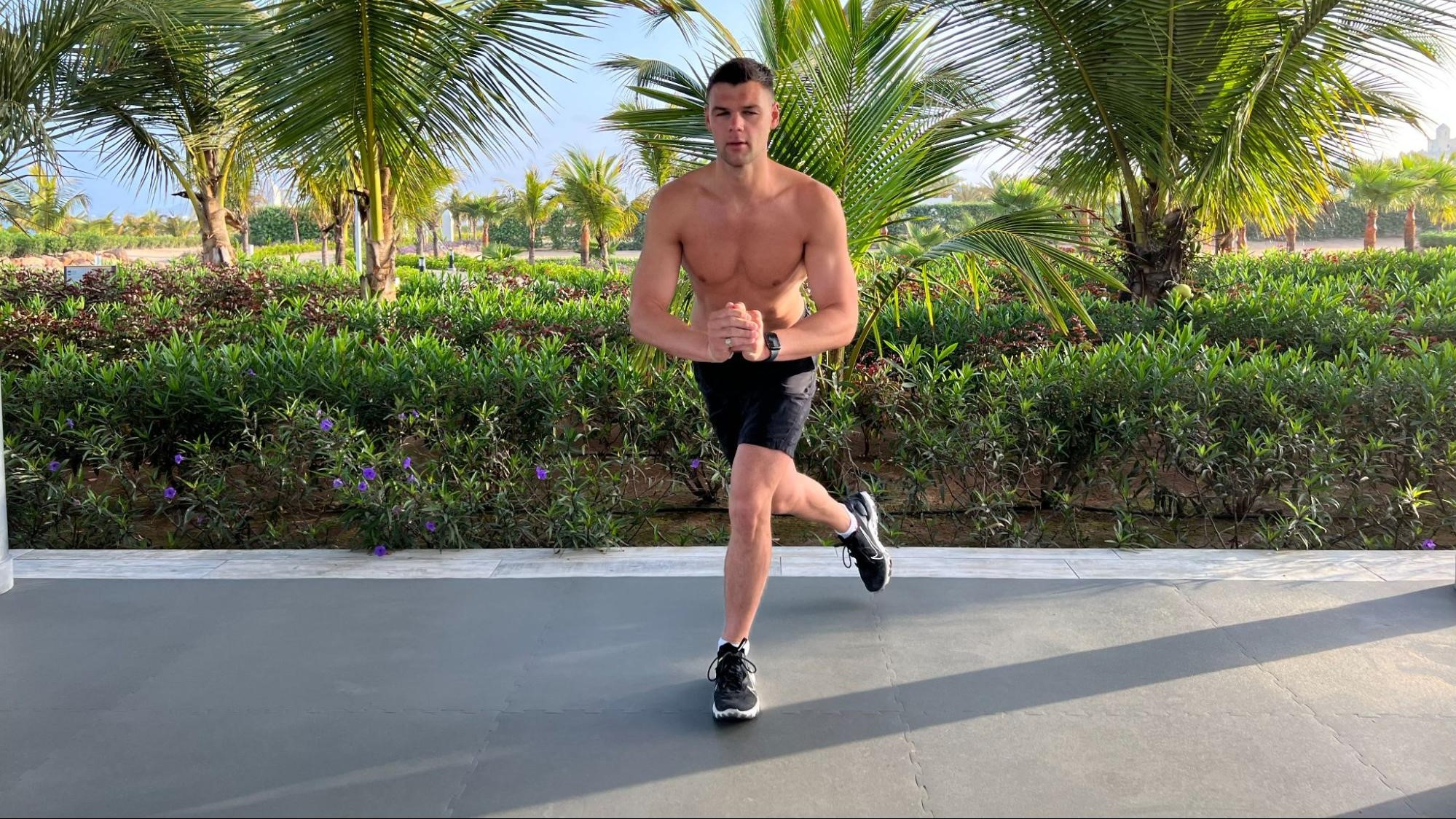
The best leg workouts can help improve your posture and increase your lower body strength. Strong legs are also an important factor in maintaining mobility as you age, but it also makes every day activities like walking easier.
Your legs form the foundation of your body, so maintaining flexibility in your leg joints and supporting muscles, including your core, means that your body can remain active throughout the years.
This guide focuses on bodyweight exercises, though you'll need a resistance band for one move, but you can step up the resistance and add weight to some of them with one of the best adjustable dumbbells for a more intense workout.
We spoke to Sam Shaw, a qualified personal trainer and founder of Lemon Studios Personal Training, who gave us his favorite exercises for legs to get you started, with photo demonstrations and step-by-step guidance.
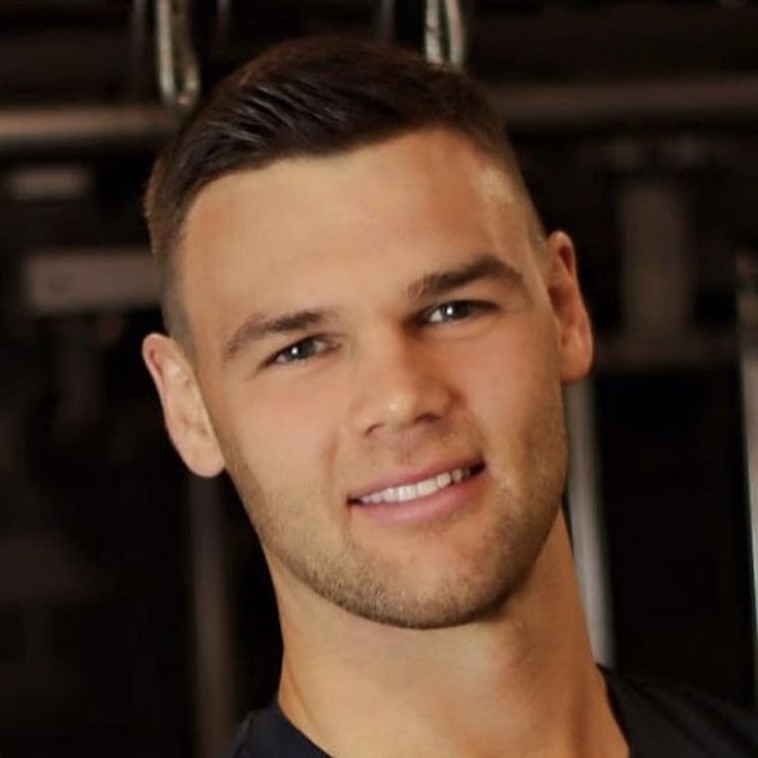
Sam Shaw is a certified personal trainer and the founder of Lemon Studios. He has trained several actors and television presenters and believes in a holistic approach to mental and physical health, incorporating exercise and nutrition.
Best leg workouts for lower-body strength
Before you dive into your training, it's important to warm up before a workout. This helps promote blood flow and oxygen to your muscles and lengthens the fibers to prepare them for exercise.
Best leg workouts training plan
| Exercise | Duration | Sets |
|---|---|---|
| Bodyweight squats | 15 reps | 3 |
| Bodyweight hip thrusts | 15 reps | 3 |
| Bodyweight reverse lunge | 12 reps each side | 3 |
| Bodyweight wall sit | 1 minute | 3 |
| Bodyweight curtsy lunge | 12 reps each side | 3 |
| Hamstring walk-ins | 6 reps | 3 |
| Single-leg glute holds | 30 seconds each leg | 6 |
| Glute crab walks | 1 minute | 3 |
| Bodyweight jump squats | 15 reps | 3 |
| Alternate jump lunges | 12 reps | 3 |
1. Bodyweight squats
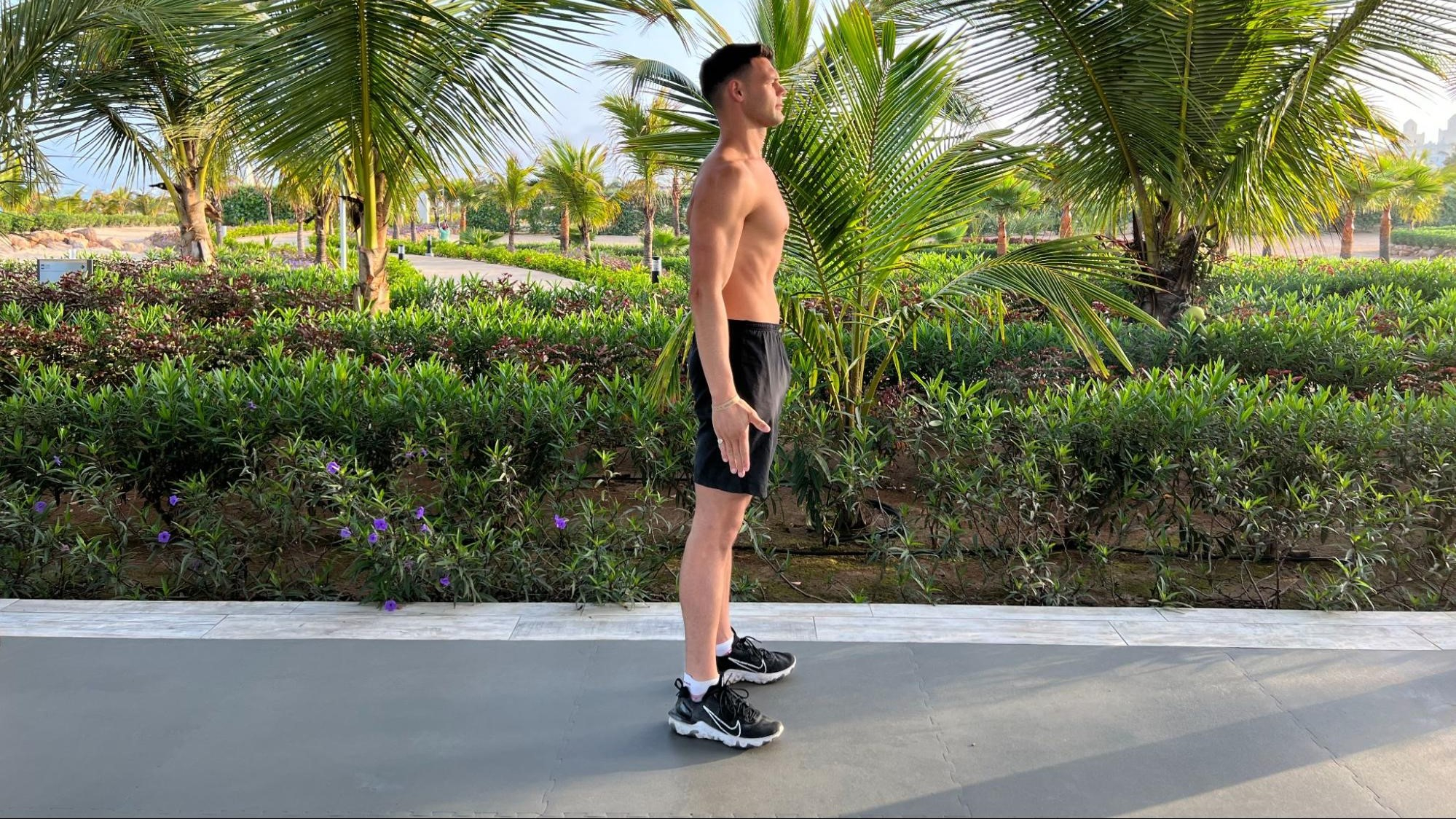
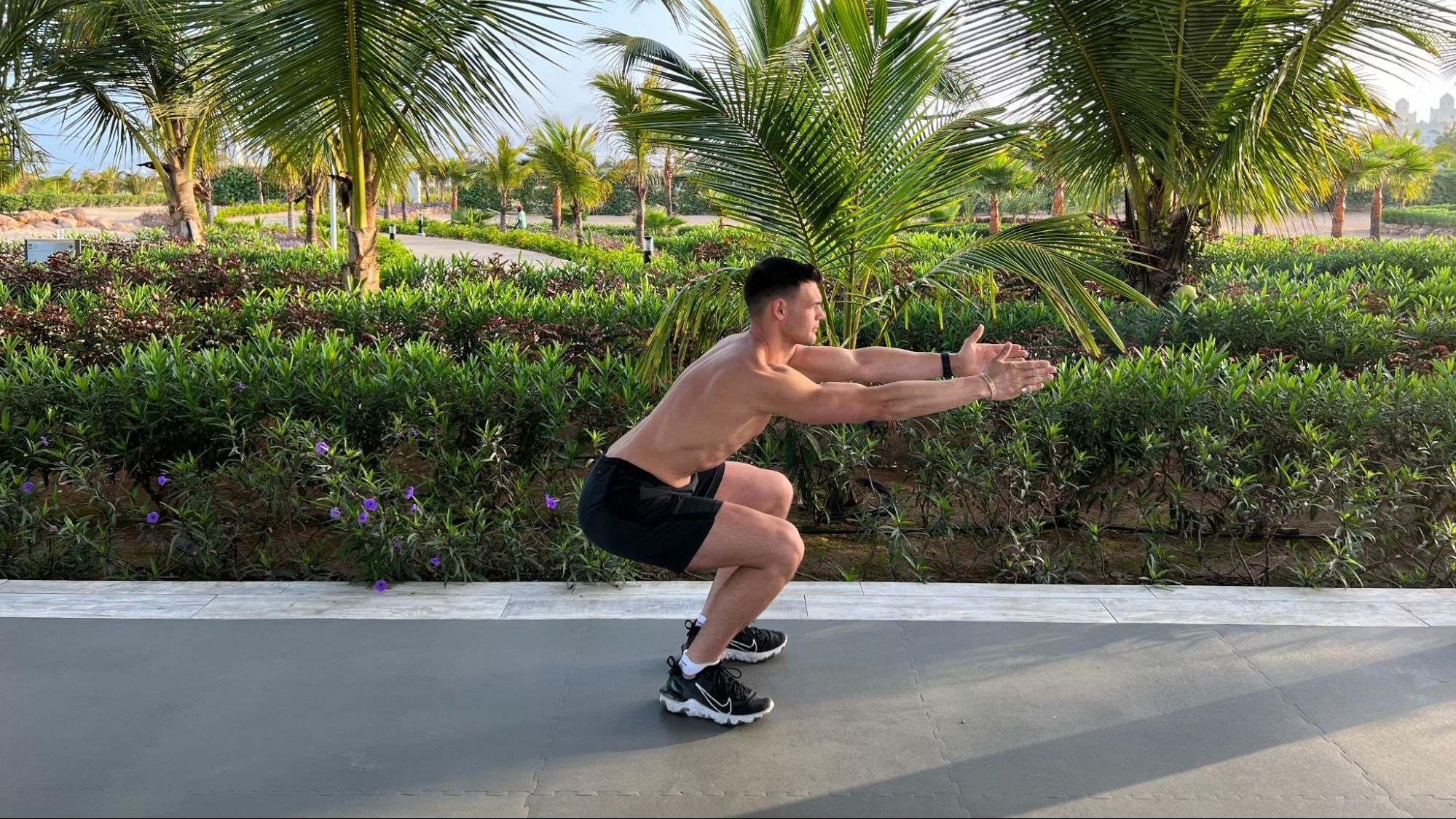
15 reps x 3 sets
- Stand tall with your legs shoulder-width apart and weight through your heels. Keep your chest up and back straight.
- Drop down to a 90-degree angle. Hold the weight through your glutes and hamstrings (the muscles on the back of your legs), and drive up.
- Then squeeze the glutes at the top of the movement. That's one repetition.
2. Bodyweight hip thrusts
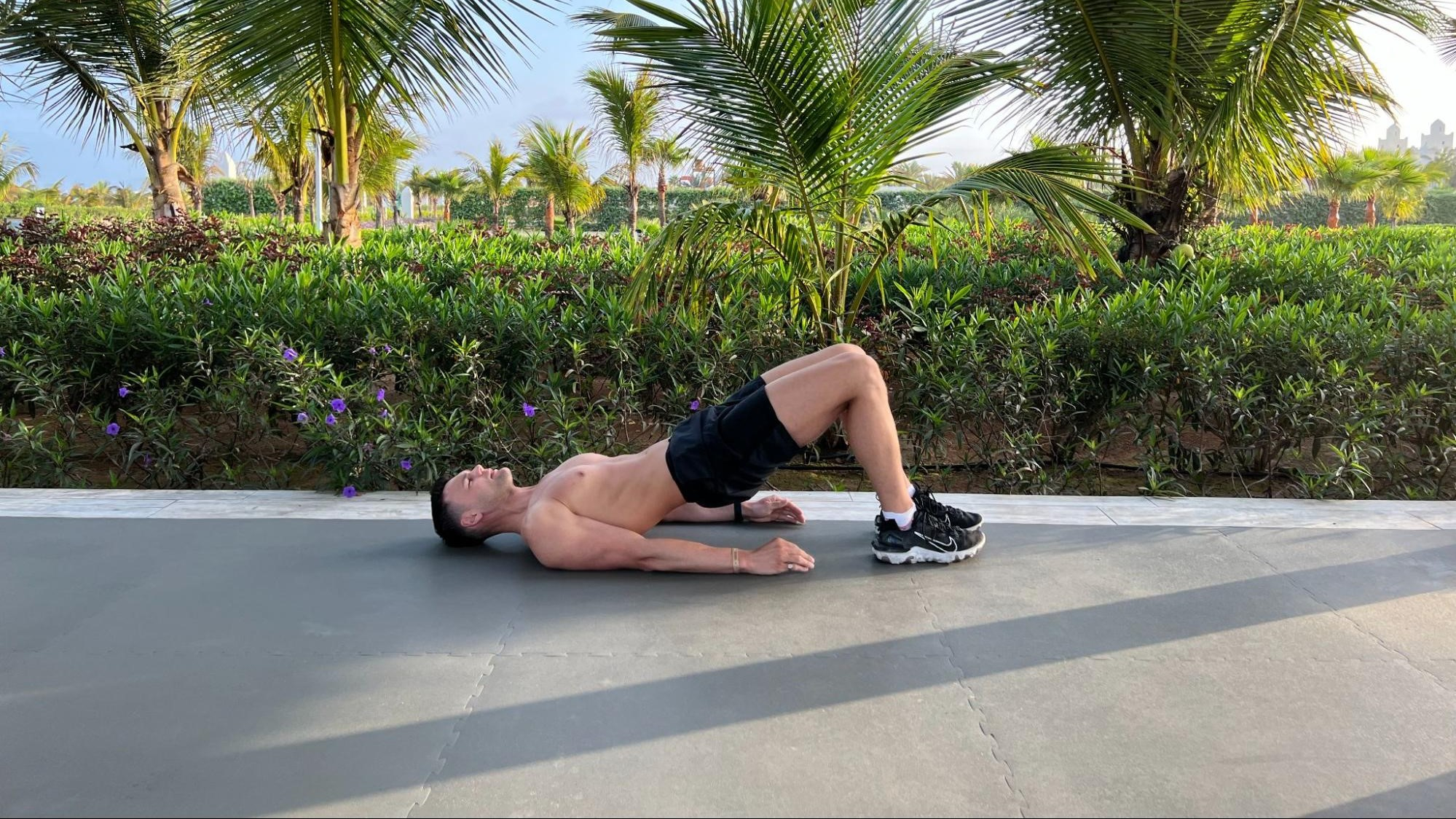
15 reps x 3 sets
Start your week with achievable workout ideas, health tips and wellbeing advice in your inbox.
- Lie face up on the floor with your knees bent to 90 degrees and tuck your tailbone under.
- Drive through your heels lifting your hips up towards the ceiling and keeping your glutes engaged.
- Slowly lower down, keeping tension in the glutes. Keep the weight in your heels. That's one repetition.
3. Bodyweight reverse lunge
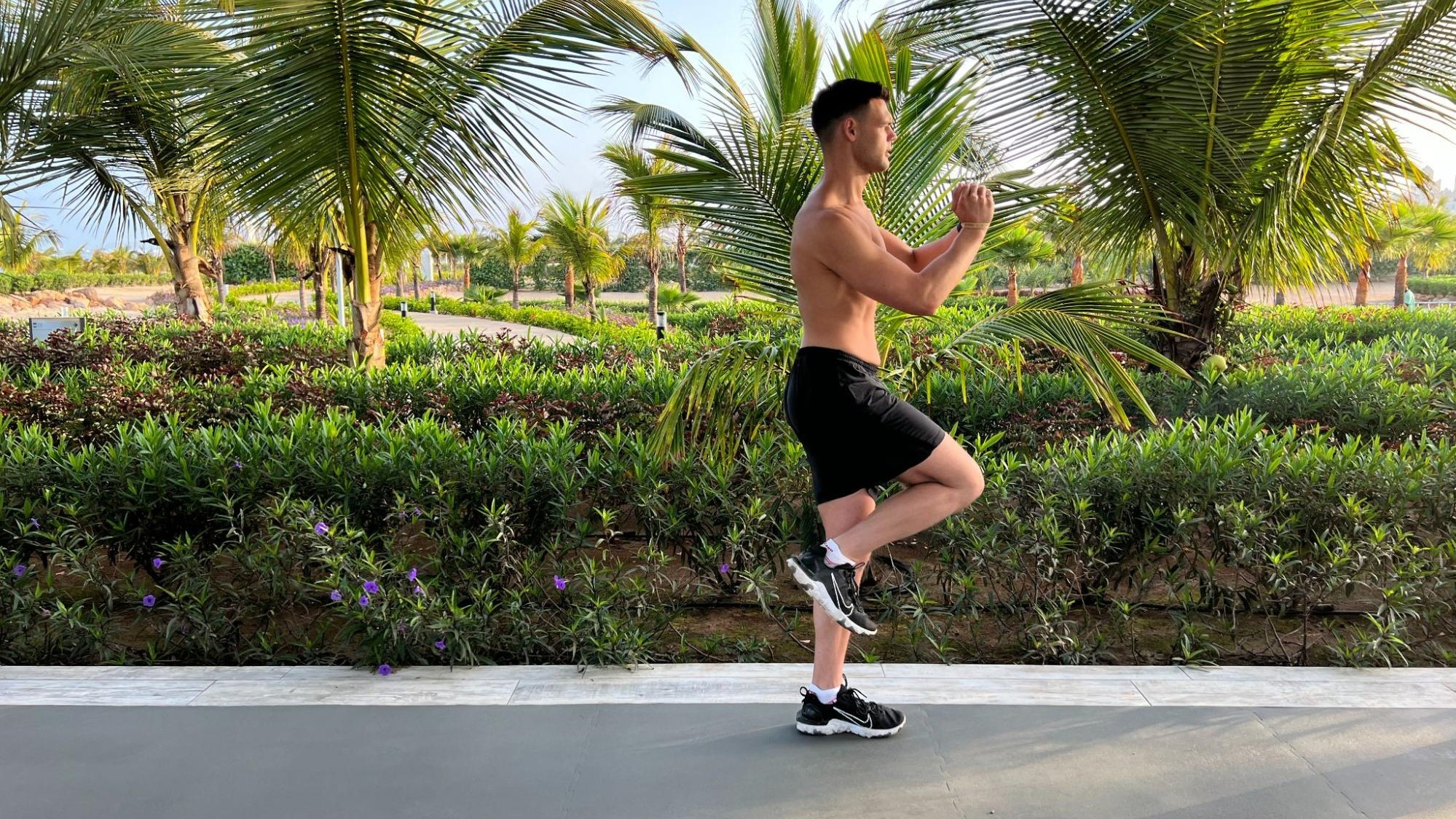

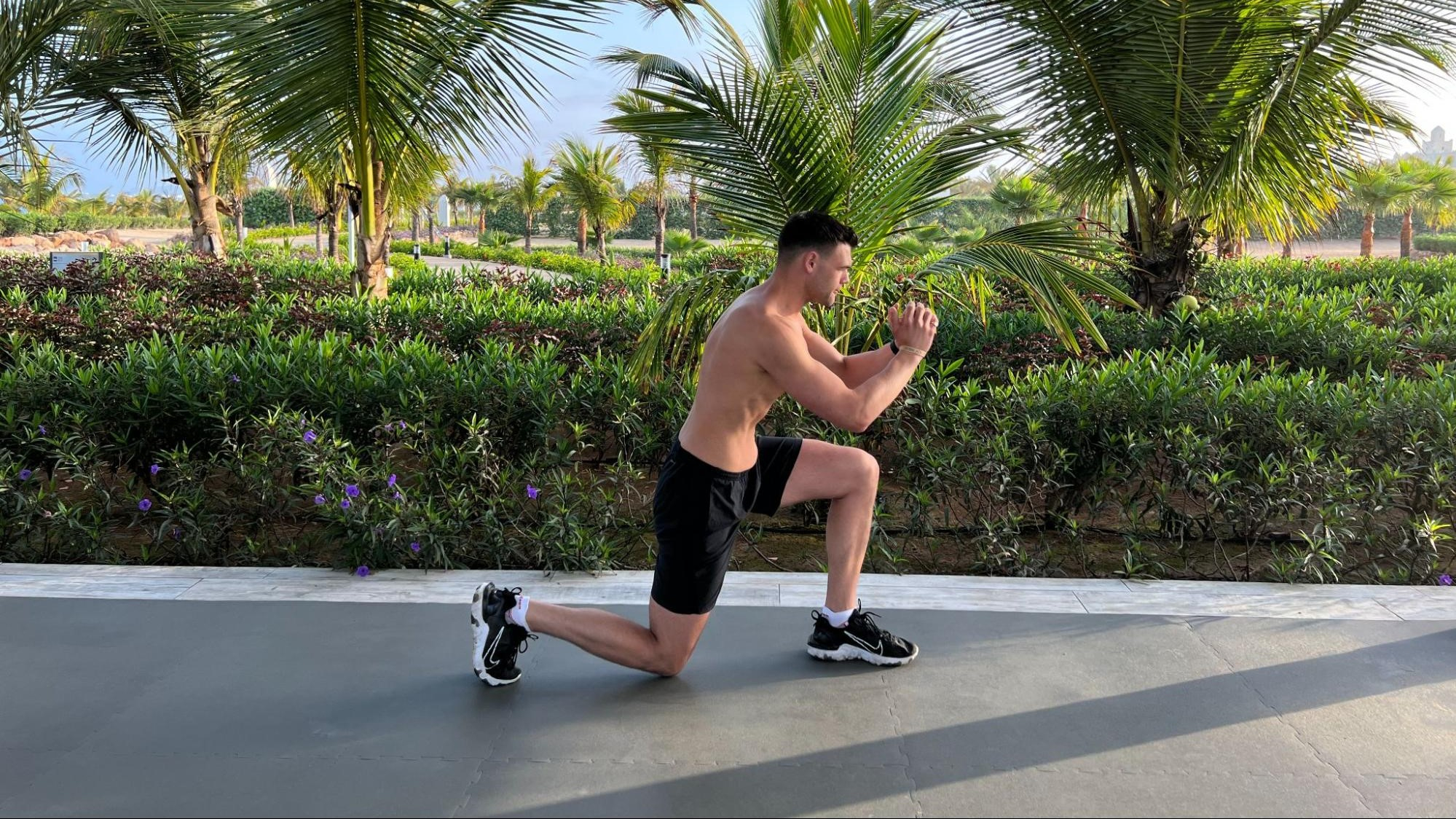
12 reps each side x 3 sets
- Stand tall with both feet on the floor and shoulder-width apart. Hinge your hips and keep your chest up. Keep the weight in your heels and step one leg backwards.
- Come down to 90 degrees and then drive up through the front leg.
- Squeeze the glutes and keep one leg off the floor. That's one repetition. Complete all 12 reps then repeat on the other side.
4. Bodyweight wall sit
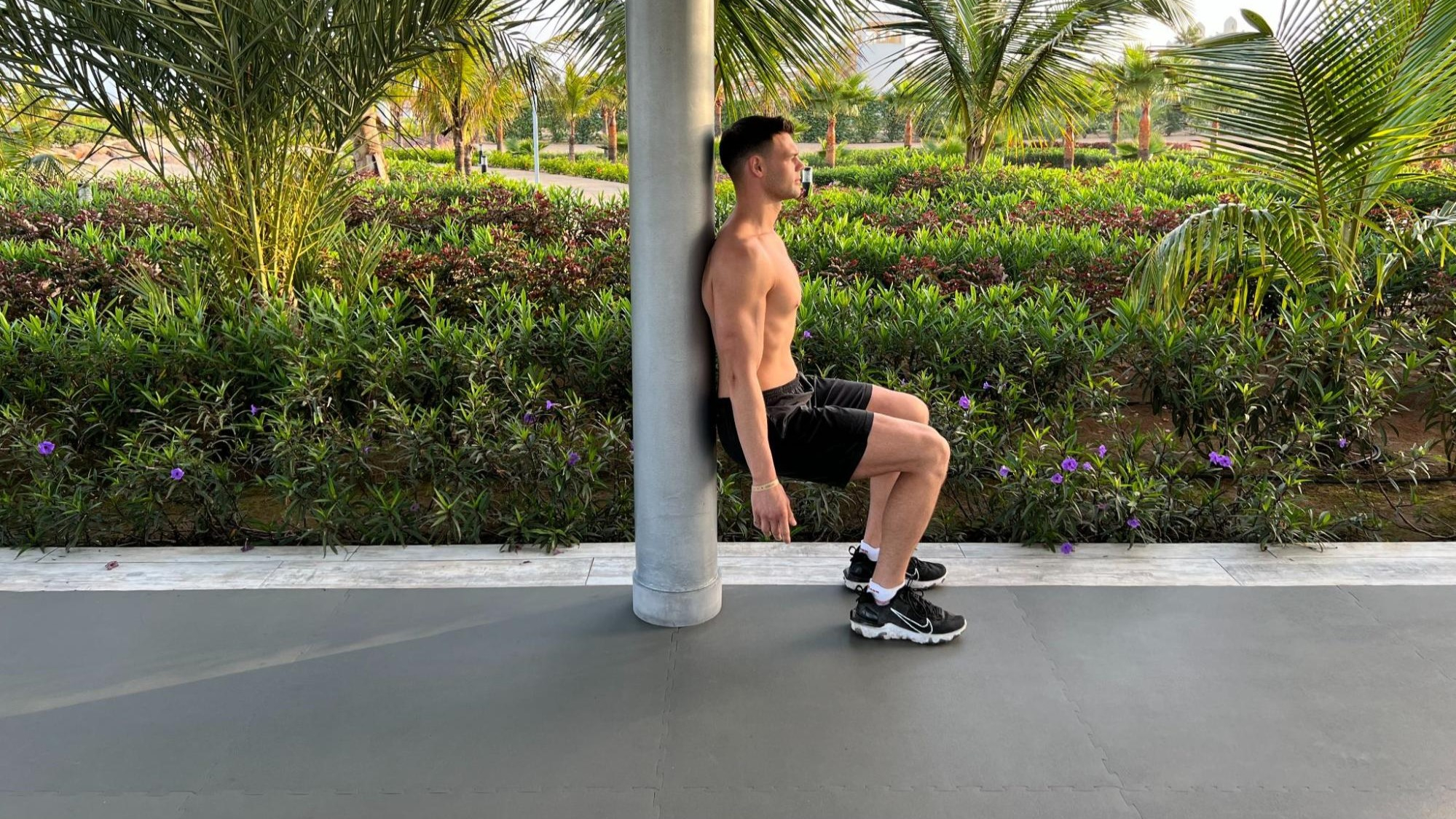
1 minute x 3 sets
- Stand with you back against the wall and your weight in your heels.
- Drop down to a 90-degree angle keeping your knees shoulder-width apart.
- Keep your shoulder blades back. Hands by your side and hold for one minute.
5. Bodyweight curtsy lunge
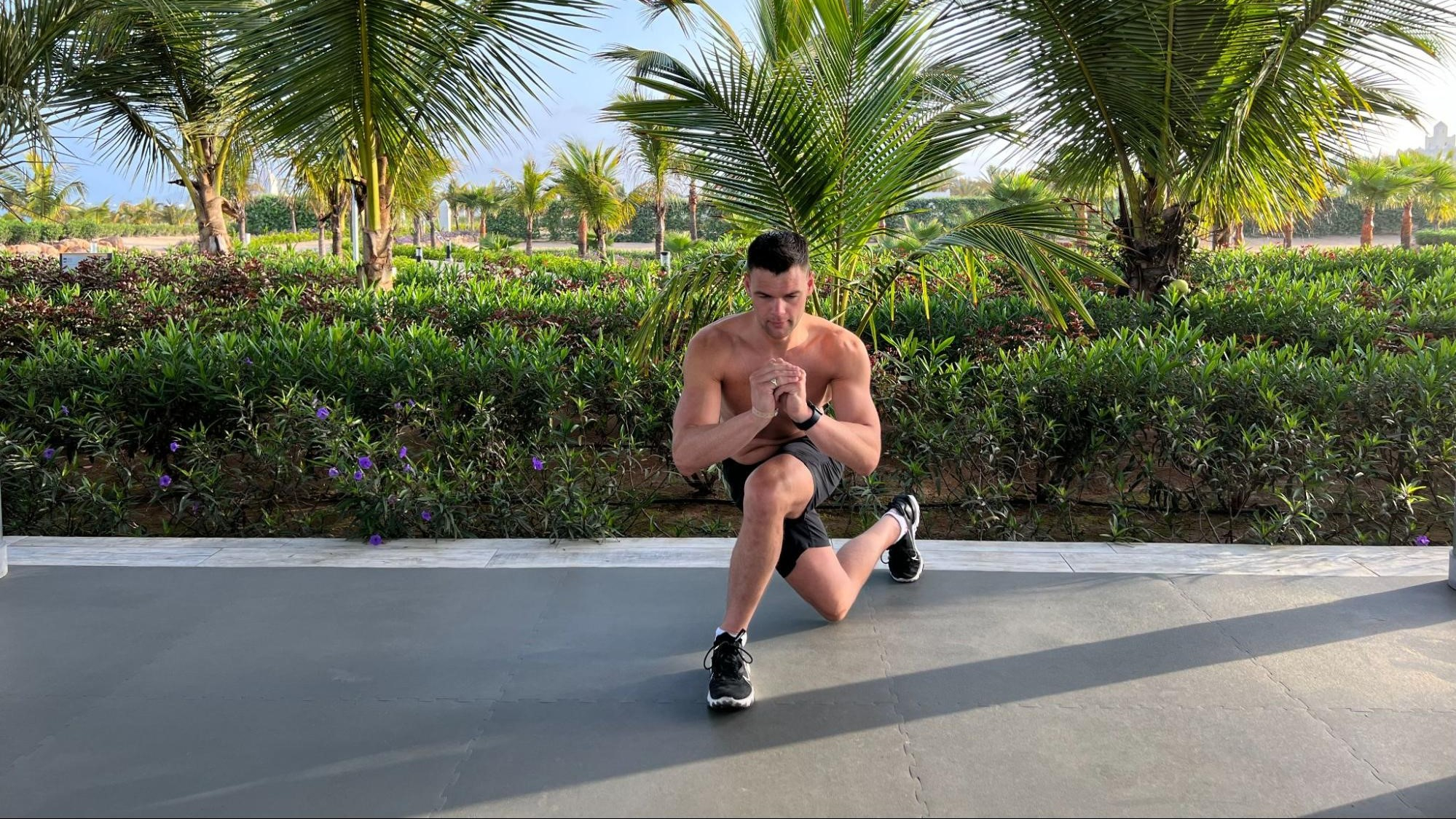

12 reps each side x 3 sets
- Stand tall with feet shoulder-width apart. Keep your chest up core engaged.
- Take a step back with your left leg behind your right at a 90-degree angle. Keep the weight through the front heel. Lower your hips until your left thigh is nearly in line to the floor.
- Push off through front heel and squeeze the glutes at the top of movement. That's one repetition. Repeat on the other leg and alternate for 12 reps on each side.
6. Hamstring walk-ins
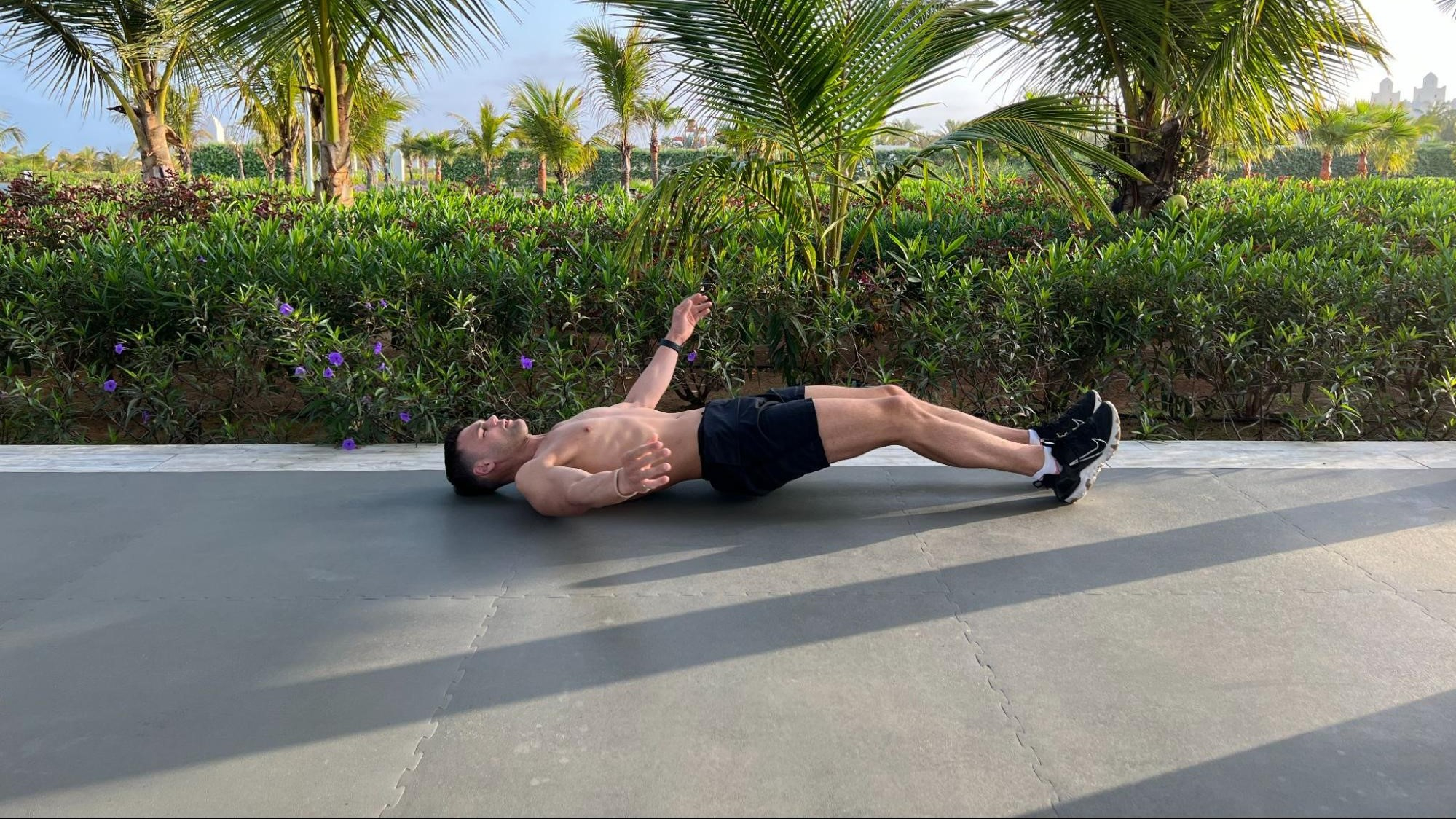
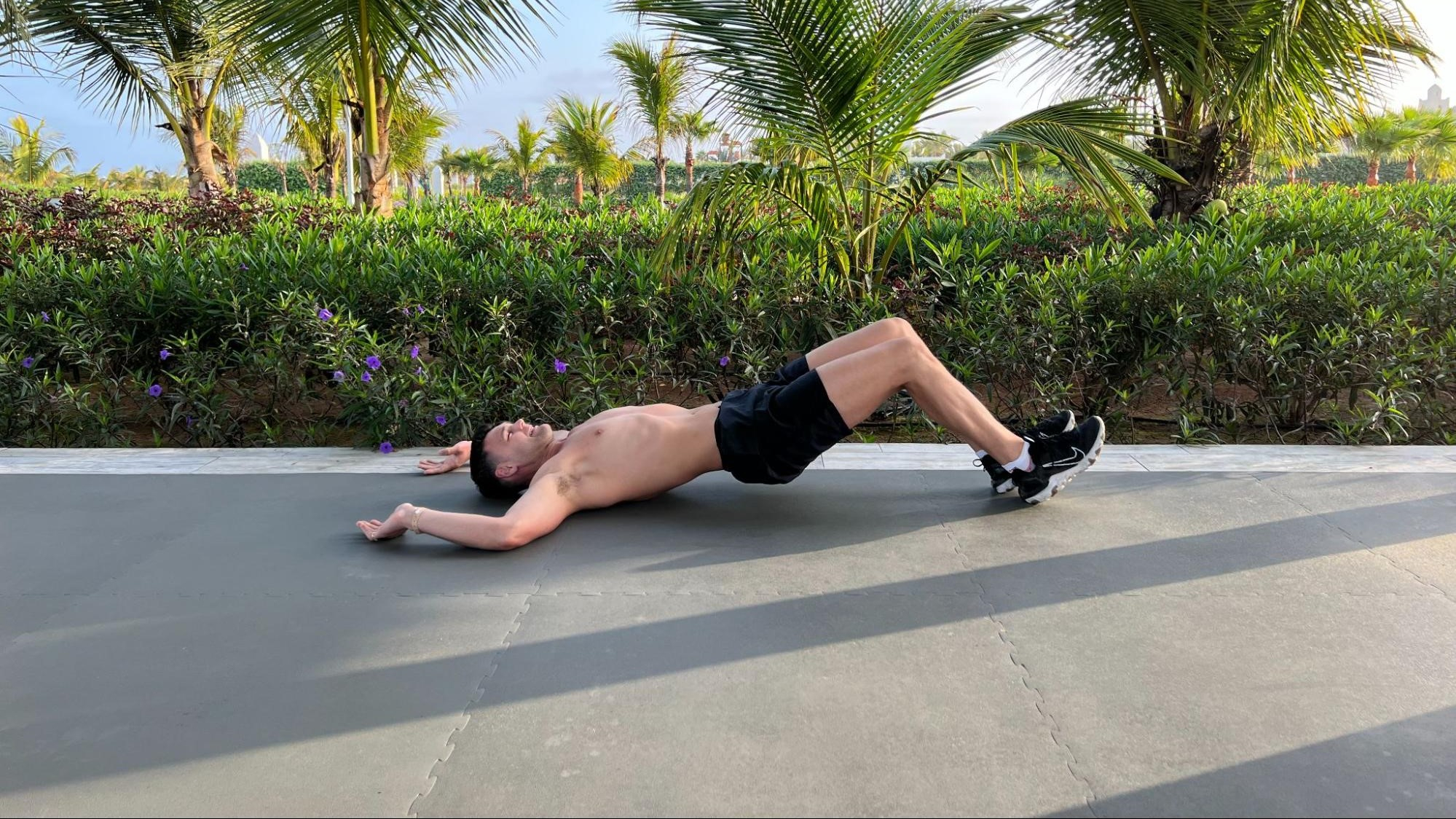
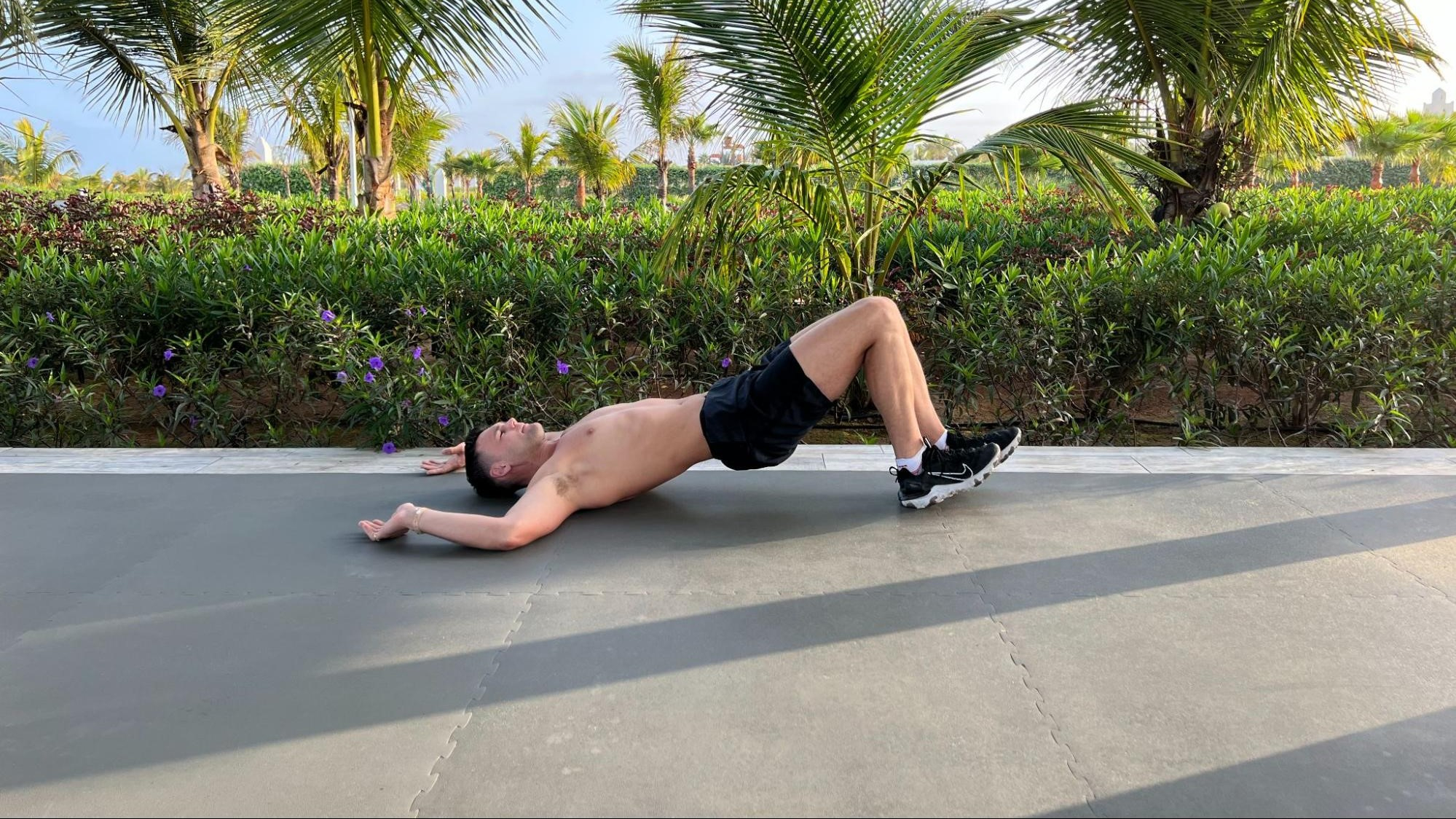
6 reps x 3 sets
- Lie on your back with your legs out straight and your heels on the floor, toes to ceiling.
- Bring your hips up off the floor, weight through the heels. Slowly walk your heels in towards your glutes, keeping your hips up and using your hamstrings to stabilize.
- Slowly walk your feet back out making sure you are keeping the weight through the heels. That's one repetition.
7. Single-leg isometric glute holds
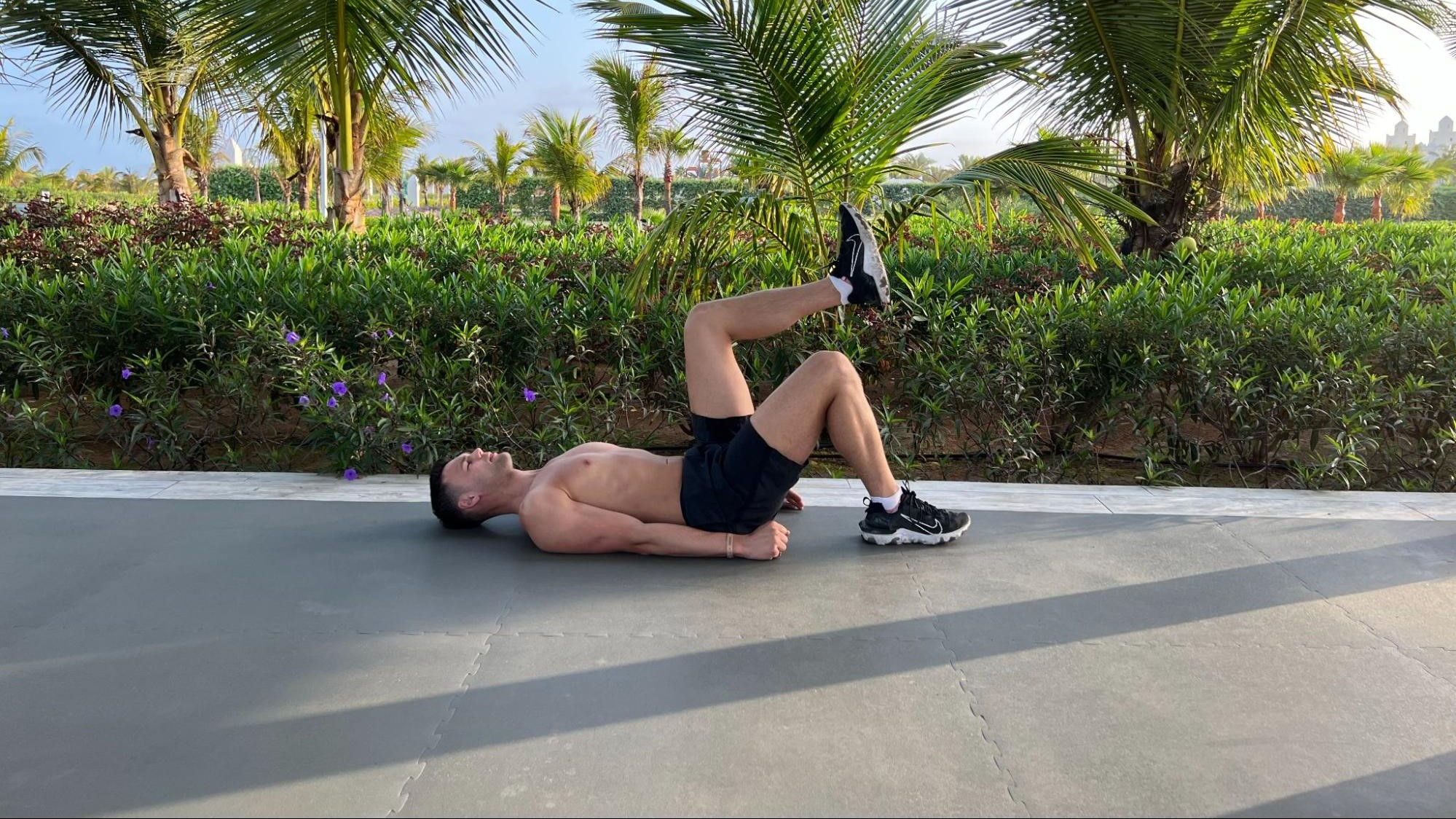
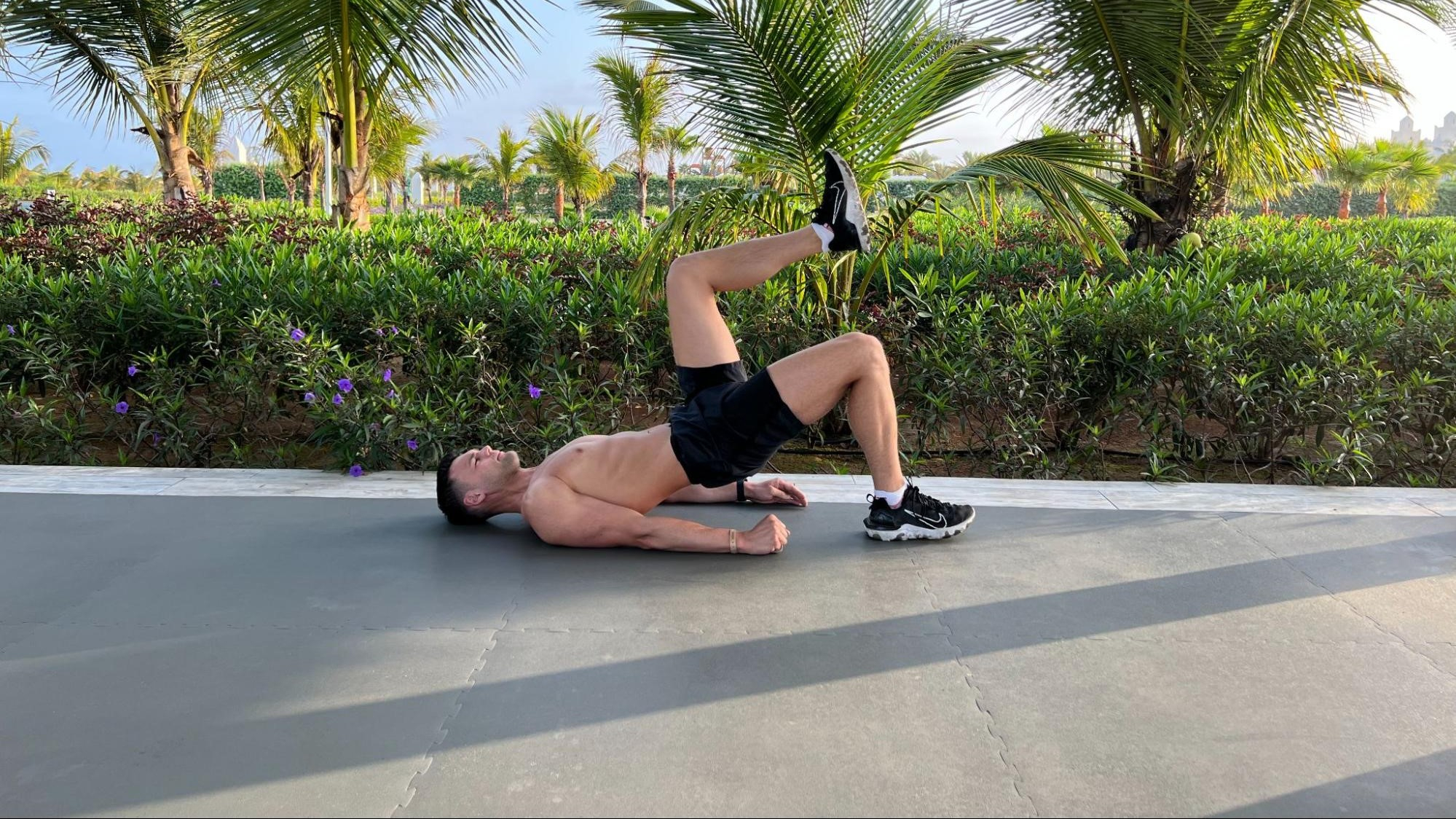
30 seconds each leg x 6 sets
- Lay on the floor with your knees shoulder-width apart. Tuck your tailbone underneath and position your left leg at 90 degrees and your right leg straight.
- Push up through the heels lifting the hips towards the ceiling and keeping your glutes engaged.
- Hold at the top of the movement for 30 seconds and repeat on the opposite leg.
8. Glute crab walks
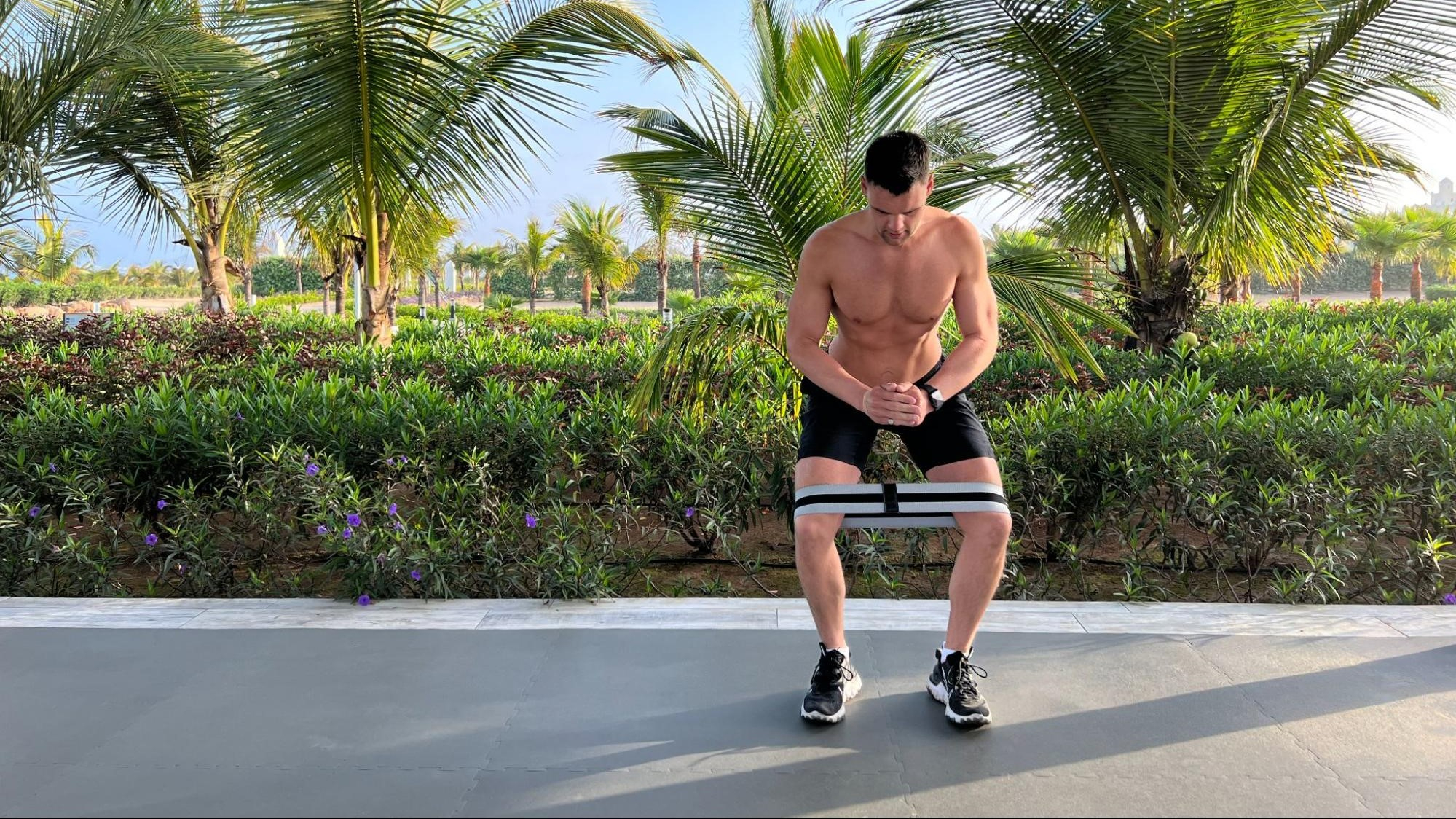
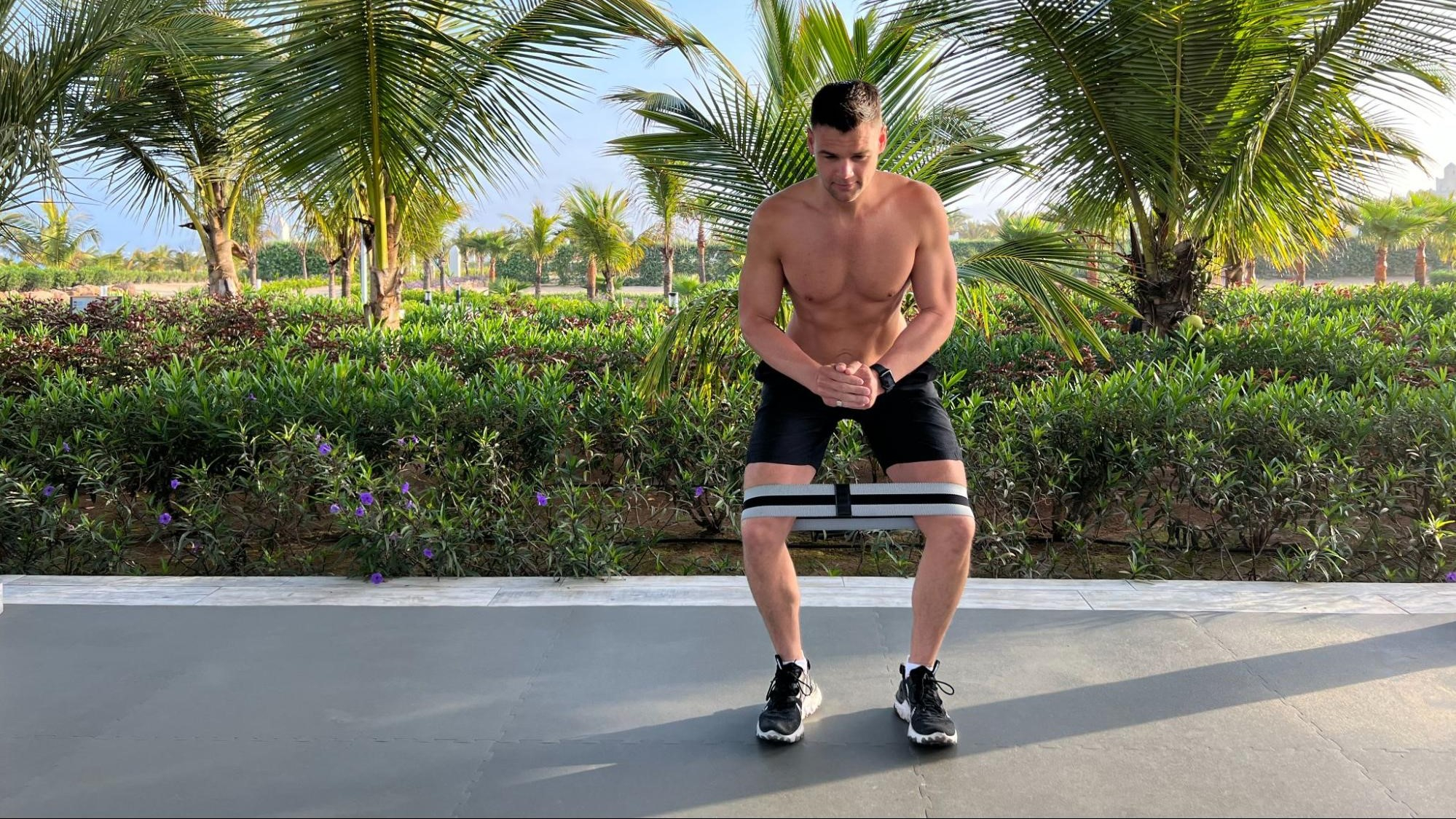
1 minute x 3 sets
- Grab a resistance band and place just above the knees.
- Place your feet shoulder-width apart. Hinge your hips back and drop into a squat position. Push your knees out wider than your feet and engage the glutes.
- Take four small steps to the left, keeping the band as tight as possible.
- Reverse the movement by taking four small steps to the right. Repeat this pattern for one minute.
9. Bodyweight jump squats
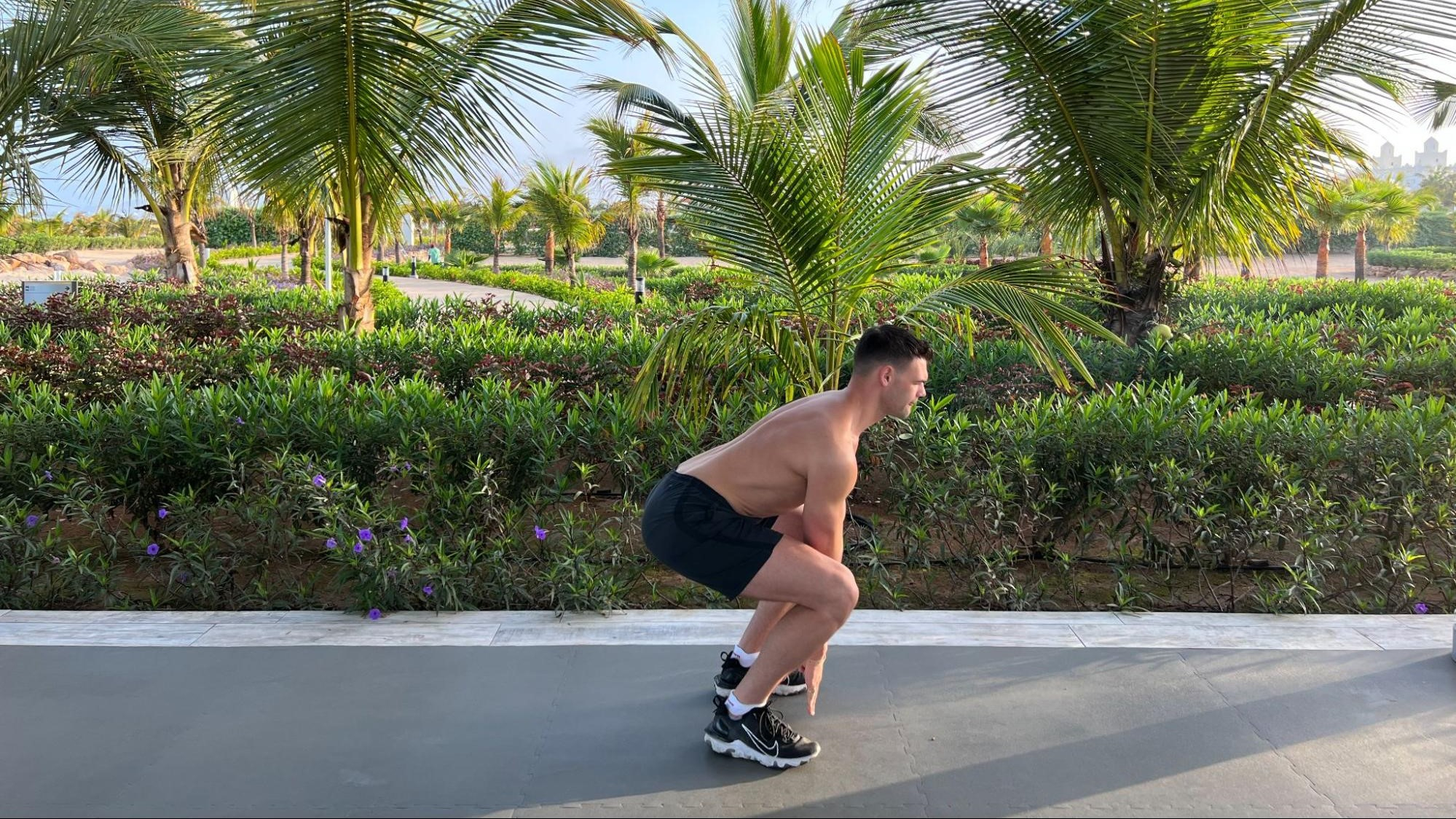

15 reps x 3 sets
Shaw notes this is not a suitable exercise for those with knee problems.
- Start standing with your feet hip-width apart. Keep your chest up, push your hips back, and drop into your squat position keeping your back straight and weight through your heels.
- Sit down to 90 degrees and then push through your heels and explode up to jump off the floor as you straighten your body.
- On the landing, bend your legs and slowly drop back down to 90 degrees.
10. Alternate jump lunges
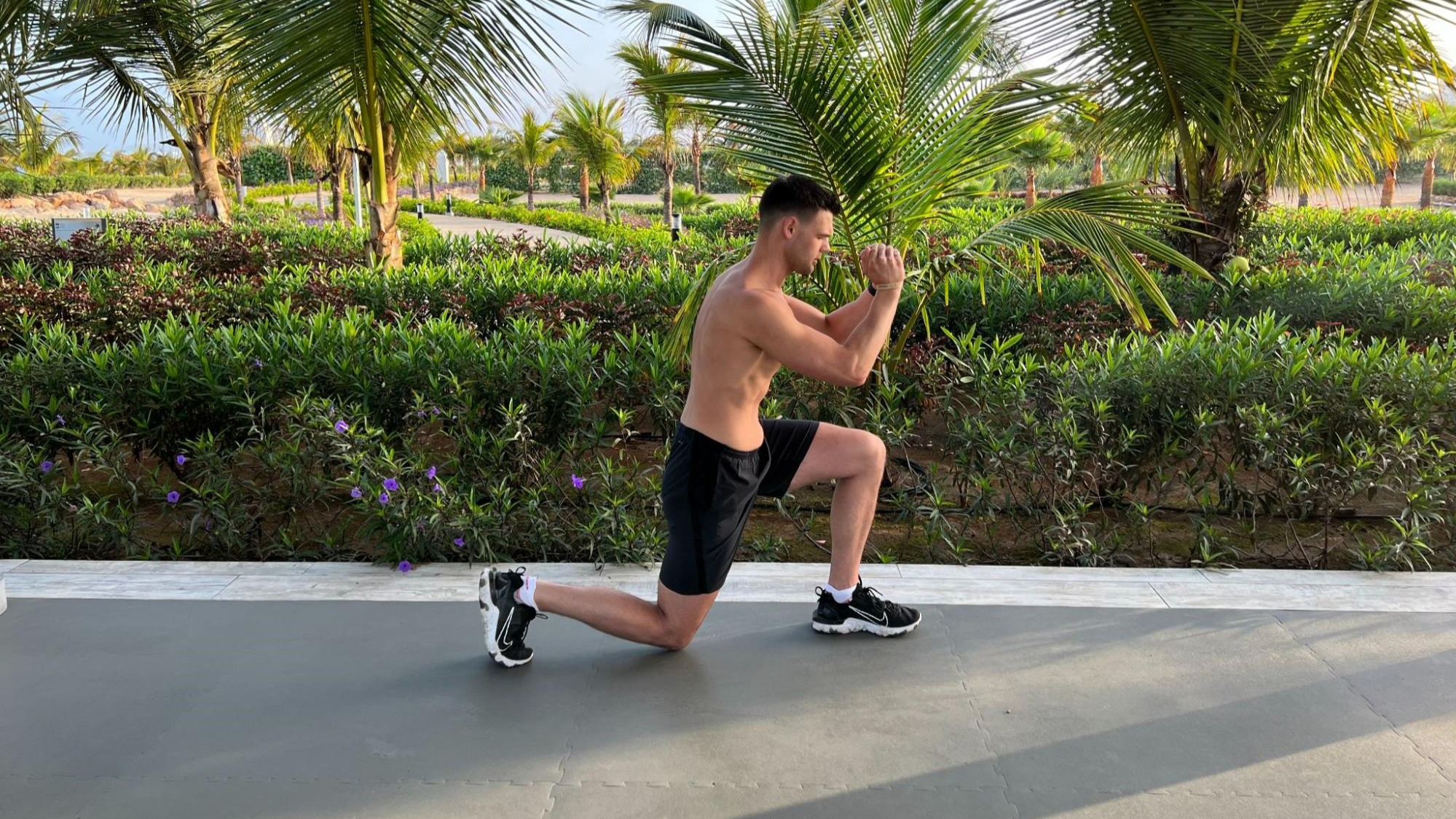
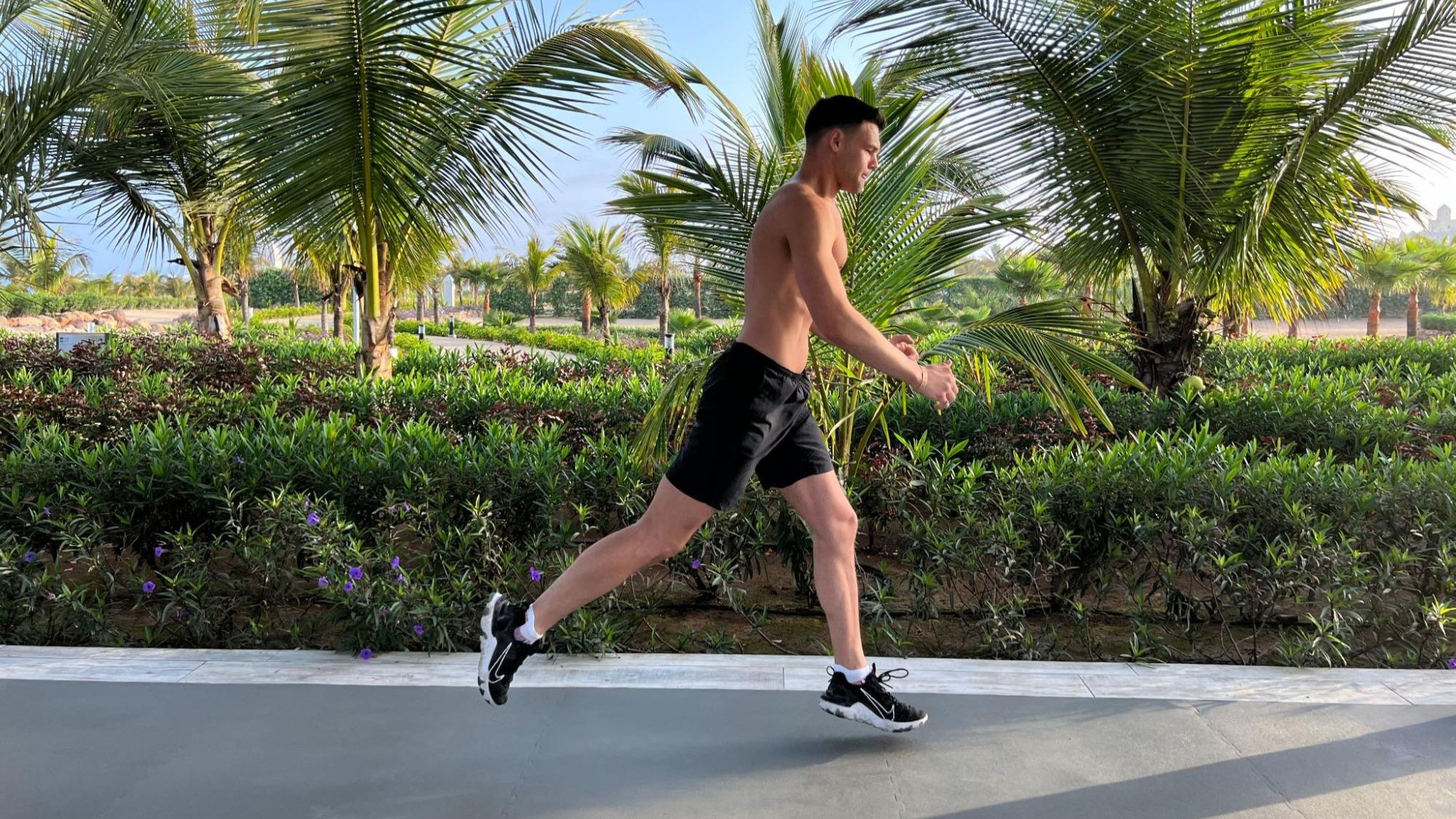
12 reps x 3 sets
Shaw notes this is not a suitable exercise for those with knee problems.
- Take a large step backwards, hinge your hips, keep your chest up, and lower your back knee so it is just above the floor.
- Jump up pushing off the front leg through the heel switching leg positions in the air. Repeat for 12 repetitions with this alternating pattern.
If you want to increase the intensity of these bodyweight exercises, you can start adding resistance into the mix. Like with the glute crab walks, a resistance band is an excellent way to start challenging your muscles.
You can add a band to most of these moves, but if you want a routine dedicated to this type of training, we also have a resistance band leg workout you can try. If you prefer working out with weights, you have options too.
This eight-move dumbbells leg workout, also designed by a personal trainer, works your whole lower body and engages your core to boost your stability, improve your posture, and increase your balance.

Lou Mudge is a Health Writer at Future Plc, working across Fit&Well and Coach. She previously worked for Live Science, and regularly writes for Space.com and Pet's Radar. Based in Bath, UK, she has a passion for food, nutrition and health and is eager to demystify diet culture in order to make health and fitness accessible to everybody.
Multiple diagnoses in her early twenties sparked an interest in the gut-brain axis and the impact that diet and exercise can have on both physical and mental health. She was put on the FODMAP elimination diet during this time and learned to adapt recipes to fit these parameters, while retaining core flavors and textures, and now enjoys cooking for gut health.
